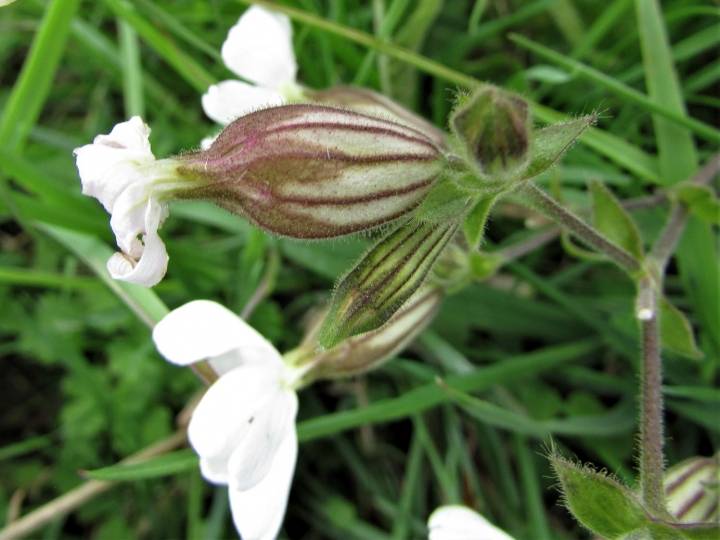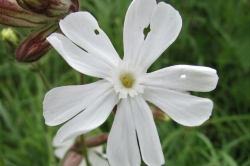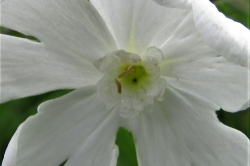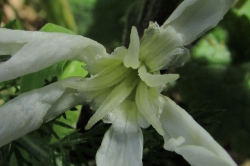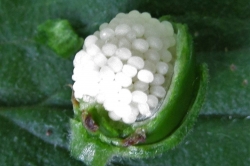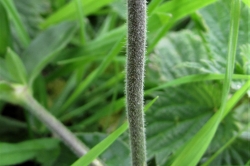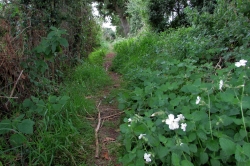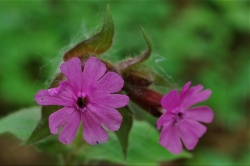White Campion is mildly toxic as it contains saponins so is best used as a soap substitute. It is quite a common plant that often grows with and can hybridize with the very common Red Campion, Silene dioica, producing Pink Campion.
Home / Hedgerow Guide /
White Campion
White Campion
Leaves
The leaves are oval with a pointed end and grow in opposite pairs close to the stem without an obvious stem of their own and are covered in small hairs.
Flowers
White Campion has five white petals that are deeply notched and have a second, small, frilly ring of petals in the middle with an expanded calyx behind the flower that will become the seed pod. The flowers are dioecious meaning they have either male or female flowers on separate plants so they need to be growing near each other to have a chance of producing seeds. Unlike many flowers, White Campion flowers stay open at night and develop more of an aroma at this time.
Female Flowers
The female flowers have curling styles in the middle of the flower. The outer petals in this image are wilted from a very hot day.
Possible Confusion
Bladder and Sea Campion can look similar but Bladder Campion has larger, more inflated ‘bladders’ and several flowers on a branched stem, Sea Campion also has a larger bladder and usually has only one flower per stem and the petals are not deeply notched.
Red Campion, pictured, looks the same but with pink flowers and a red calyx.
Smell
The flowers have a floral smell which is stronger after dusk.
Frequency
Fairly common.
Other Facts
Campions contain saponins, especially in the root, which are mildly toxic but can be used as a soap substitute by boiling the roots in water.


 (5 votes, average: 4.60 out of 5)
(5 votes, average: 4.60 out of 5)